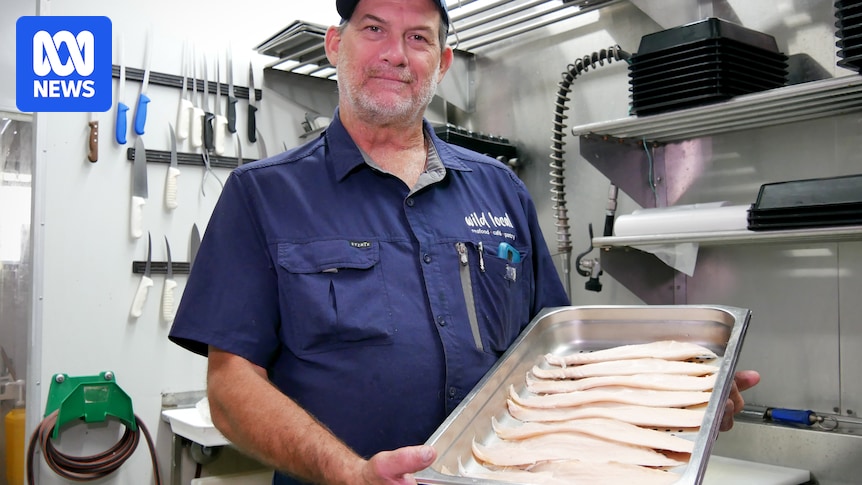Commercial fishers will be allowed to increase their Spanish mackerel catch by more than 50 per cent by the end of the year under proposed new Queensland catch limits.
The proposal could reduce prices for consumers, but marine conservationists believe the move is too soon to safeguard fish stocks.
The Queensland Department of Primary Industries announced new figures this week showing the Spanish mackerel population had likely doubled since a dire review in 2021.
It is now planning to raise catch limits for recreational boats from two fish per boat to a maximum of four.
For commercial fishers it would increase annual allowable catches by 51.5 per cent, from 165 tonnes to 250 tonnes.
Cheaper prices
Queensland Seafood Industry Association president Allan Bobbermen said consumers would see lower prices if the changes went through.
He said under current rules the fish was not “readily available” to buy.
Allan Bobbermen says consumers could see cheaper Spanish mackerel. (ABC Rural: Lucy Cooper)
“The consumer will have a bit more guarantee of continuity of supply,” Mr Bobbermen said.
He said the changes were good news for the commercial sector where the Spanish mackerel industry was almost “dead in the water”.
“Spanish mackerel sell themselves,” he said.
“It’s an iconic fish, it’s got a very good shelf life, you can cook it in many ways and it’s very popular in the fish and chip trade.”
The 2021 state government review found Spanish mackerel were being overfished and assessed fish stock at 17 per cent of original levels.
The following year the former Labor state government announced it would slash commercial catch quotas by more than 71 per cent.
The changes caused the value of fishing licences to plummet and forced many commercial fishers out of the industry.
Restrictions were announced by the state government in 2022 and came into effect the following year. (ABC News: Lily Nothling)
The Crisafulli government has described the 2021 review as a flawed stock assessment and said a 2025 assessment found Spanish mackerel were fast growing and highly reproductive.
Environmental experts cautious
Simon Miller from the Australian Marine Conservation Society disputed assessments that Spanish mackerel populations had doubled.
He said since the 2021 review, feedback had been taken on board from stock assessment scientists and the state government had revised the way it conducted assessments.
“The new stock assessment puts the stock at 34 per cent,” he said.
“That doesn’t mean the stock has doubled, it just means it’s a different assessment.”
The Queensland government wants to increase catch limits of Spanish mackerel. (ABC North Qld: Lily Nothling)
The state government intends to consult the public before the proposed changes come into effect, potentially by the end of the year.
Mr Miller said while the new stock level was good news it still showed a long-term decline in the last decade that had only seen a “slight uptick” in the last couple of years.
He said the state government should wait until it saw stronger evidence of stock recovery for changes to be made to catch limits.
“We still need to be very precautionary in how we’re managing Spanish mackerel,” he said.
Mr Bobbermen hoped the move would bring commercial operators back to the water.
“It means they won’t have to surrender so many units of quota to get one kilo of fish, which is going to give them more value,” he said.
“Some of the guys that stepped away from the industry will return.”

